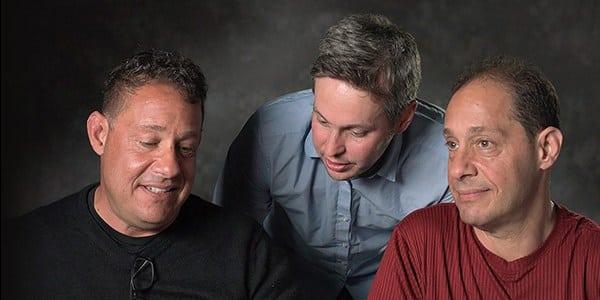 ?I don?t know whether this will be great or terrible.?
?I don?t know whether this will be great or terrible.?
Sometimes we are fascinated by a story. But then there is the story that makes the story even more amazing. That is the case with Three Identical Strangers. It begins as a human interest story that captured a good deal of media attention in the 1980s. But as the film progresses, it reveals an increasingly darker story behind the story.
It begins when David Kellman went off to college. When he arrives everyone is amazingly friendly, although they keep calling him Eddy. It turned out that he looked exactly like a student who was there the year before, Eddy Galland. Soon, the two connect and discover they had the same birthdate and were both adopted through the same agency. The long-lost brothers story made the papers. When Robert Sharan saw pictures in the paper, he saw two copies of himself. Soon, the triplets who had been separated at birth were making the rounds of TV talk shows and were the toast of New York City. They moved in together and eventually went into business together with a restaurant. Yes, an amazing story.
But what about the story behind them being separated at birth? The three sets of parents were upset that they didn?t know there were others. Why hadn?t they had the chance to let the boys be together? Why didn?t the agency tell them all about these babies they adopted? Now the film begins to peel back layers of the story to reveal a darker manipulation that was going on, unknown to the families involved. There are people involved here who have been making use of and taking advantage of these children for years.
 For the most part, the story is told by David and Bobby (Eddy died in 1995), with some input from family and friends. That makes this a personal story. That is important because as the film turns darker, it could be easy to step back and only see issues instead of the people whose lives were affected. And there are ample issues to be considered: nature/nurture, psychological and academic ethics, mental illness.
For the most part, the story is told by David and Bobby (Eddy died in 1995), with some input from family and friends. That makes this a personal story. That is important because as the film turns darker, it could be easy to step back and only see issues instead of the people whose lives were affected. And there are ample issues to be considered: nature/nurture, psychological and academic ethics, mental illness.
The film leaves viewers with unanswered questions, in part because there is a great deal of information that has been sealed. Even though we meet some people who were involved with what was going on behind the story, they only have limited information based on their particular involvement, as opposed to the overarching plan. There are also comments that refer to some things that may be too personal for the people involved to want to speak of on camera.
Because the film also deals with the roles of nature and nurture in determining who we become, it may also raise questions in viewers about how they came to become who they are. How much of our lives are we in control of and how much is set in our genetic make-up? This film points to some of the complexities of our lives by looking into the complexities of these three lives that seem so similar.






